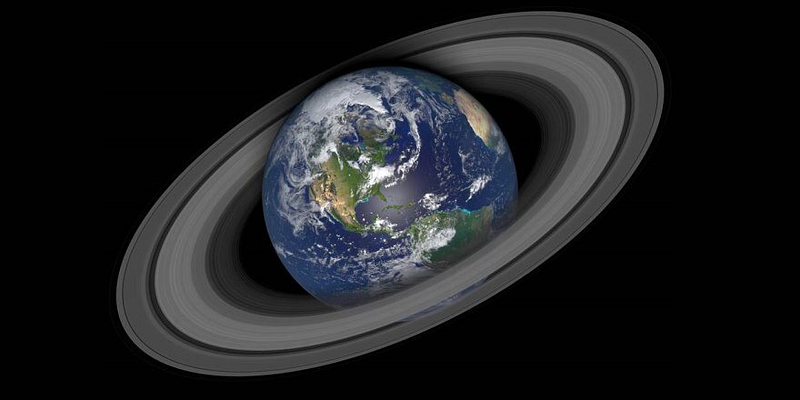Why Doesn't Earth Have Rings? Exploring Planetary Dynamics
Written on
Chapter 1: The Mystery of Earth's Absence of Rings
In the early 17th century, renowned scientist Galileo Galilei made a groundbreaking observation of Saturn through an enhanced telescope. He noticed unusual formations flanking the planet's disk, mistaking them for moons. However, about fifty years later, Christiaan Huygens clarified that these formations were actually a disk encircling the planet. Today, we recognize that such rings exist not only around Saturn but also around other gas giants. This prompts a crucial question: why don't similar rings exist around Earth? Let's delve into this intriguing topic.

Did Earth Ever Have Rings?
The prevailing theory regarding the Moon's formation, which dates back approximately 4.53 billion years, involves a collision between Earth and a celestial body named Theia. This event, believed to occur at the L4 Lagrange point, resulted in a significant amount of debris being ejected into orbit around Earth, initially forming a ring that eventually coalesced into the Moon. However, this scenario would not have occurred if that ring had existed within the Roche limit—the critical distance beyond which a satellite can remain intact without succumbing to tidal forces.

This implies that if the Moon had been situated too close to Earth, the planet's gravitational pull would have torn it apart. Similarly, if a ring had been established within this critical distance, it could not have formed a satellite.
Why Are There No Rings Around Terrestrial Planets?
Currently, we observe rings around all the giant planets. Some of these rings are massive and easily observable, while others are faint and were only recently discovered. For instance, Jupiter's rings were only identified in 1979 by the Voyager 1 spacecraft and were studied in detail during the 1990s. This raises another fundamental question: why do gas giants boast rings while terrestrial planets do not?
The origins of rings around giant planets remain somewhat enigmatic. Two primary theories exist. The first posits that the rings surrounding Saturn and other gas giants are remnants from the protoplanetary disk from which these planets originated. If this theory holds true, terrestrial planets lack rings because much of the residual material was captured by the larger planets, leaving terrestrial bodies without the necessary material to form their own rings.

Another theory suggests that rings can form when a celestial object, such as a comet or asteroid, crosses the Roche limit. While rings could potentially appear around terrestrial planets, they would not persist for long. For instance, if rings formed around Earth following the breakup of a large comet at the Roche limit, they would quickly disperse along Earth's orbit. The icy particles, which primarily compose Saturn's rings, would likely vaporize in Earth's orbit due to its proximity to the Sun.
Thus, while rings could theoretically form around any terrestrial planet, their longevity is highly questionable.
The first video, "Why Does Earth NOT Have Rings? The Roche Limit Explained," provides further insight into this topic, examining the Roche limit and its implications for planetary rings.
The second video, "If Earth had Rings," imagines a scenario where Earth possesses rings, exploring how they might form and their potential impact on our planet.
Clap if you want to see more articles about space in your feed! Subscribe to our channel and ask your questions, which I will address in future articles.